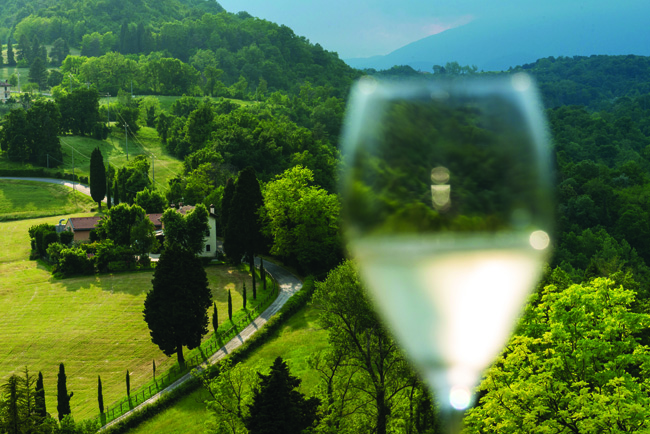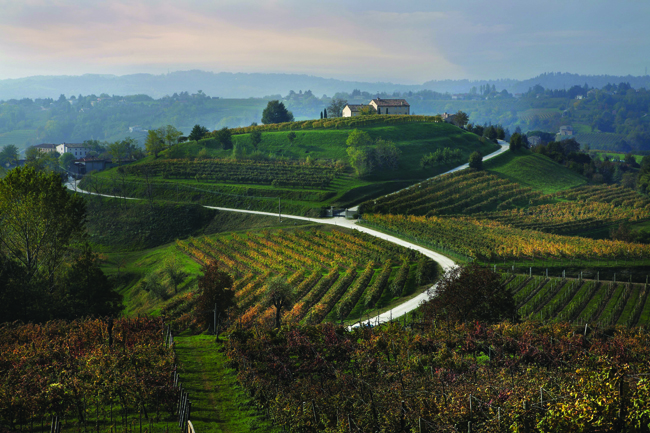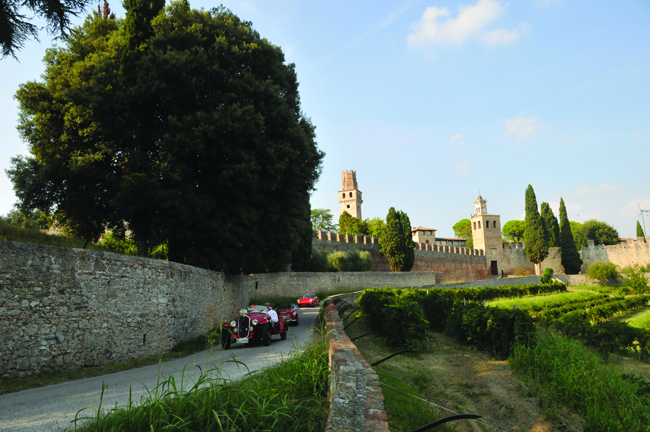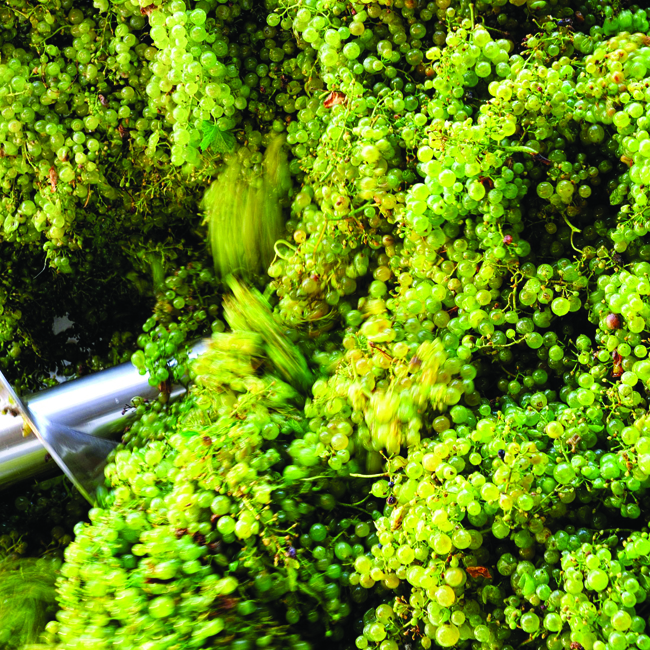Think Prosecco and you may think of Bellinis and Spritzers, but there is so much more to the wine than that, as its producers are keen to point out. Kevin Pilley treads the Prosecco Road in Italy’s far northeast…

One for the shade,” said Francesco, handing me an ombra of fizzy San Giuseppe Superiore DOCG – ‘Designation of Origin Guaranteed’.
The toast was “Welcome to the Land of Joyous Bubbles!” The wine was extra brut, chilled and sparkling. The location was the 17th-century Villa Spada in Refrontolo. The scenery was the Treviso hills with their chestnut woods, hay barns and steep, south-facing vineyards. Francesco topped me up with another piccolo, a small one. We admired its perlage, its rising pearls. He effervesced. “Good prosecco is good for hypertension. This wine is guaranteed good. It’s from my field. Hand-harvested. Straight from the garden of Venice!”
From May to August, the Prosecco-growing region, one hour north of Venice by train and car, hosts sixteen weekend wine shows – mostras – and al fresco barbecues, allowing you to meet local wine scientists like Francesca, and get to sample their handiwork while they speak about the highly digestible microbial population of local cheeses like Castellata. And generally talk a lot of bollicine, or ‘bubbles’. In Prosecco country you will be forever imbibing bubbles.
The Prosecco Road

The ‘Prosecco Road’ is Italy’s oldest wine route. It is 60km long and connects you with 120 wine producers, like Andrea Miotti in Vittorio Veneto. He graduated from the world’s oldest wine school in Conegliano, the hub of the Prosecco world. The school was founded in 1876.
At the municipality’s wine show in the 15th-century Todesco Palace, lady sommelier Monia Zanete did the honours. We listened appreciatively as she popped. We nosed. Andrea detected intense peach and almond primary aromatics. I struggled with pronouncing Conegliano-Valdobbiadene, where all the best Prosecco comes from. The Grand Cru is Cartizze. “It’s what’s behind the label that matters,” said Andrea. “Prosecco is often mislabelled. Spumante has negative connections. People think as an easy drinking wine Prosecco must be a minor wine, just sparkling supermarket plonk. Being popular, it can’t be good. Drunk so young it can’t be old. But it is. 700 years old. It was called Pucinum. Then Raballo. Some families have worked with the Glera grape in the Marca Treviso since 1600. ”
A Village Near Trieste

Between Venice and the Dolomites you quickly learn the difference between frizzante (semi-sparkling) and tranquillo (still), and to tell a Gregoletto from a Cornetto. You learn that Prosecco is named after a village near Trieste. The Strada del Vino takes wine tourists past Palladian villas, built to escape Venice’s mosquitos, pieve (churches) with murals, frescoed loggias, the 12th-century Cistercian abbey at Follina, the old Mollina Del Croda watermill and waterfall on the River Lierza, the River Piave and lots of wineries, cantine and osterie offering cucina casalinga.
At the Casa a Giorgio in Conegliano I received unusual pairing tips from Giorgio’s son. Expecting advice on what to have with fatty entrées and marbled cheeses, Marco turned up the ambient music a notch and said, “Snails with Sting. Bee Gees with rabbit. Beer with pizza. And Prosecco with everything!” Marco had just been to London. “£10 for a Prosecco? One glass! Ridiculous! There are many imposters about.”
Global Success

Prosecco’s success is global – 79 million bottles are produced every year; 47 per cent of total production is exported. The UK is second behind Germany in the European consumption table. Sixty per cent is grown in the DOC zone. Winegrowers, using the Charmat method (second fermented not in the bottle but in tanks) , make on average 70,000 bottles a year. Like Spanish Cava, most are good but some are bad imitations of the real Made in Italy thing.
“Like some olive oil is only good for shaving!” said a fellow diner at Elena and Piero’s Locanda Marinelli near Valdobbiadene, which hosts Italy’s annual Sparkling Wine Show. On the terrace overlooking Col San Martino, we nibbled our carpaccio appetizers, truffle potato slices and prosciutto ham canapés before enjoying asparagus risotto and sea bream. Meals costs around €40, excluding wine. A bottle of proper Prosecco is €7.
At the Trattoria Alla Cerva in Vittorio Veneto the menu offered rust. Or mountain goat’s beard (asparagus shoots). As well as guinea fowl and juniper, venison (cerva) with drowned beans and millefoglie custard slices.

Prosecco should be factored in as a two-day tour or a therapeutic day trip away from the perspiring queues, crammed calles, carnival mask shops, selfie stick salesmen and not great food of Venice. The area is too often ignored. Few people know where it is. Prosecco should be tasted at source. Not just at Tesco’s.
As the locals will tell you over their flutes and spiedos, Prosecco is a special place and a versatile drink. A festive drink. For breakfast, brunch, lunch, supper and dinner. It’s not just an aperitif. It’s not just for a Bellini or a Spritzer cocktail, but a wine on its own.
“There are many Proseccos, but only one Prosecco,” said owner Riccardo, lifting his bubbles. The church bells chimed, reminding the locals of their devotions.
